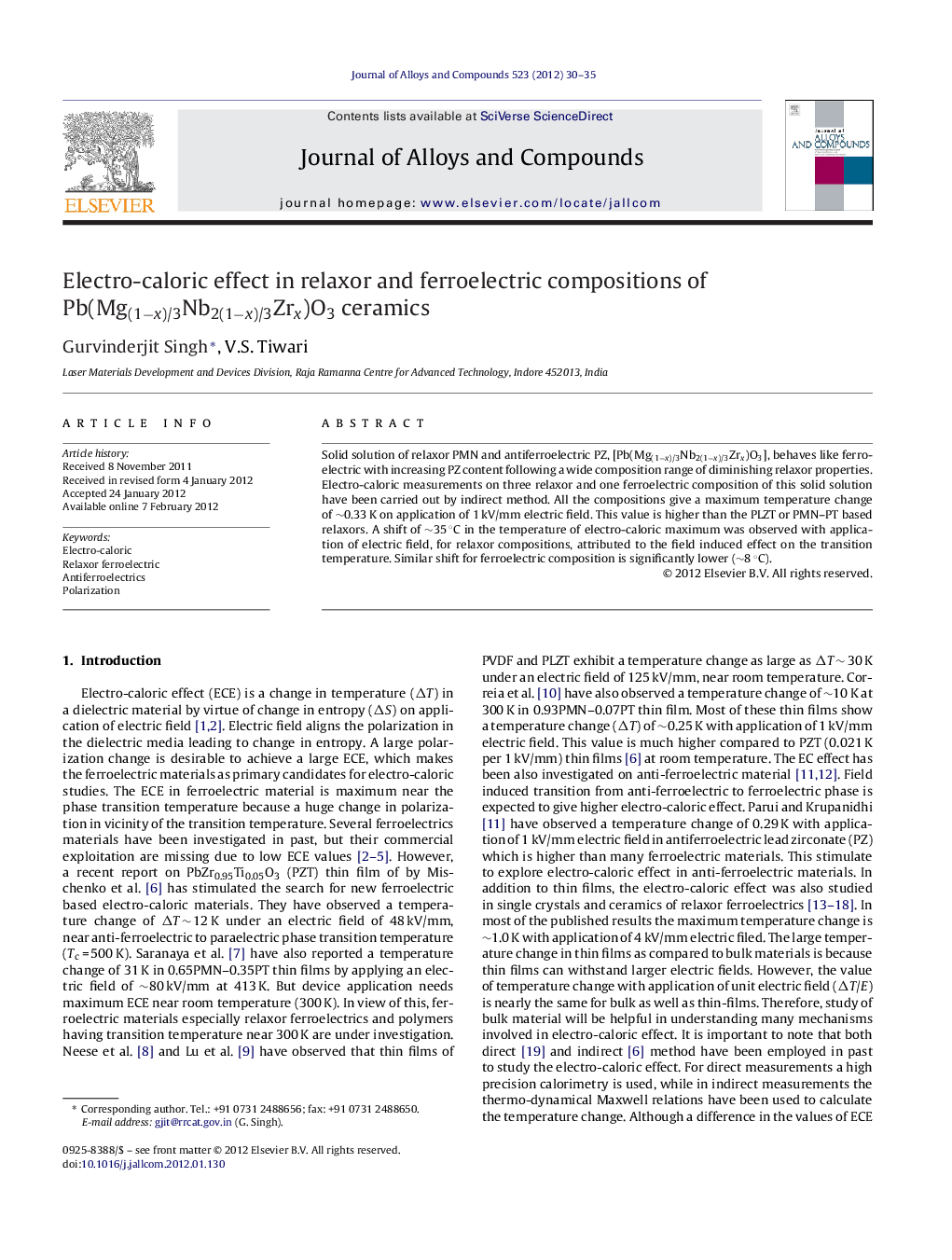| کد مقاله | کد نشریه | سال انتشار | مقاله انگلیسی | نسخه تمام متن |
|---|---|---|---|---|
| 1616218 | 1516370 | 2012 | 6 صفحه PDF | دانلود رایگان |

Solid solution of relaxor PMN and antiferroelectric PZ, [Pb(Mg(1−x)/3Nb2(1−x)/3Zrx)O3], behaves like ferroelectric with increasing PZ content following a wide composition range of diminishing relaxor properties. Electro-caloric measurements on three relaxor and one ferroelectric composition of this solid solution have been carried out by indirect method. All the compositions give a maximum temperature change of ∼0.33 K on application of 1 kV/mm electric field. This value is higher than the PLZT or PMN–PT based relaxors. A shift of ∼35 °C in the temperature of electro-caloric maximum was observed with application of electric field, for relaxor compositions, attributed to the field induced effect on the transition temperature. Similar shift for ferroelectric composition is significantly lower (∼8 °C).
► The electro-caloric (EC) effect in a solid solution of relaxor (lead magnesium niobate: PMN) and anti-ferroelectric (lead zirconate: PZ) has been studied.
► The maximum electro-caloric coefficient (ΔT/E) for this solid solution is ∼0.33 Kmm/kV.
► At room temperature the electro-caloric coefficient is highest for x = 0.30 (∼0.14 Kmm/kV) and it is significantly higher than PZT (0.021 Kmm/kV).
► A shift in the temperature of electro-caloric maximum (ΔT ∼ 35 K) was observed with increase in electric field, for relaxor compositions.
► For ferroelectric composition this shift is much lower (ΔT ∼ 8 K).
Journal: Journal of Alloys and Compounds - Volume 523, 15 May 2012, Pages 30–35